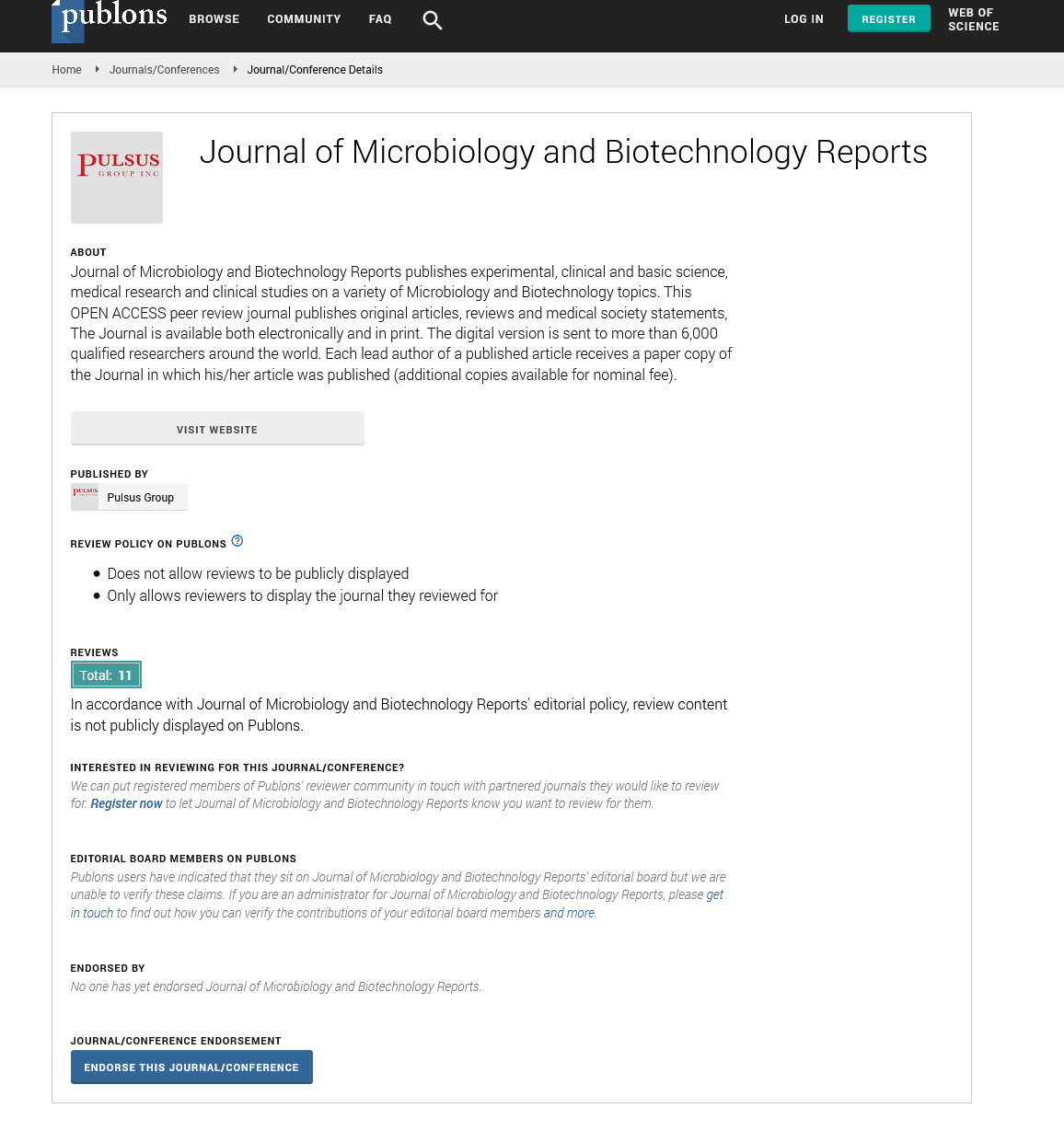Fish protein hydrolysates as peptones in microbiological culture medium
Received: 28-Feb-2022, Manuscript No. puljmbr-22-4562; Editor assigned: 02-Mar-2022, Pre QC No. puljmbr-22-4562; Accepted Date: Mar 25, 2022; Reviewed: 16-Mar-2022 QC No. puljmbr-22-4562; Revised: 20-Mar-2022, Manuscript No. puljmbr-22-4562; Published: 28-Mar-2022, DOI: 10.37532/puljmbr.2022.5(2).19
Citation: Wilson J. Fish protein hydrolysates as peptones in microbiological culture medium. J Mic Bio Rep. 2022;5(2):19
This open-access article is distributed under the terms of the Creative Commons Attribution Non-Commercial License (CC BY-NC) (http://creativecommons.org/licenses/by-nc/4.0/), which permits reuse, distribution and reproduction of the article, provided that the original work is properly cited and the reuse is restricted to noncommercial purposes. For commercial reuse, contact reprints@pulsus.com
Abstract
The growing volume of unutilized rest raw material throughout the world, notably in Norway, prompted a research into its prospective usage. In the current study, cod protein hydrolysates were utilized as peptones in microbiological growth medium. The hydrolysates were generated using several enzymatic systems and dried using various drying processes to assess the impact of processing on their use as peptones. Staphylococcus aureus and Salmonella enteriditis strains were employed as test strains. The generated microbiological culture medias based on peptones from fish protein hydrolysates were compared to an industrially manufactured reference media. When compared to the reference, the studied medias typically demonstrated equivalent or greater development of the test strains. The effects of the enzymatic system and drying process on the development of the tested strains were investigated and discussed.
Key Words
Microbiological culture media; Bacterial growth; Fish protein hydrolysate
INTRODUCTION
Microbiological Culture Medium (MCM) is commonly used in laboratories to research the development of various bacteria. A peptidederived nitrogen supply that supports bacterial metabolism and development is a major prerequisite for such MCMs and also their most costly component. Peptones derived from Fish Protein Hydrolysate (FPH) are a good source of peptide-derived nitrogen. They may be a better alternative to peptones derived from animals or plants. FPH peptones have no interaction with the prions that cause bovine spongiform encephalopathy, nor do they have the potential for genetic alterations that plants have. It was discovered that FPH peptones outperformed beef peptones on various bacteria studied. Because of the short length of the peptides and the large number of free amino acids in their composition, MCMs enriched with FPH-based peptones can be used by a wide range of bacteria. It promotes the growth of even depressed bacteria that require additional growth nutrients. Furthermore, producing FPH from waste material of marine origin would raise the market value of fishing grounds. The review of available literature on FPH-based peptones indicated a scarcity of data on the impact of processing parameters during FPH manufacturing on FPH-based peptone usage. A substantial amount of literature compared the use of industrial MCMs and those produced with FPH from various marine species, including catfish wastes (Ictalurus punctatus), red hake and menhaden by-products, cod (Gadus morhua) fishes, cowtail ray (Trygon sephen) viscera, Atlantic cod (Gadus morhua L.) viscera, hake (Merluccius hubssi). However, not only the hydrolysis technique and the enzymatic system are important, but so is the type of drying treatment. Because liquid hydrolysate is exceedingly unstable, it must be carried frozen. Dried FHP powder is a sustainable method of storing, transporting, and using FHP.
Three liquid hydrolysates were prepared from the identical rest source materials utilizing three distinct enzymatic groups: papain + bromelain, protosubtilin G3x, and autolysis. Spray, vacuum-freeze, and infrared-assisted drying were all used to dry the liquid hydrolysates. The chemical makeup of both the liquid and the final dried FPH was determined. The dried FPH samples were also examined for their appropriateness as peptones in MCMs for the test strains of Staphylococcus aureus and Salmonella enteriditis. Staphylococcus aureus and Salmonella enteriditis were chosen for this study because they are two bacteria that cause the majority of food poisonings. Because of their differing cell structures, Salmonella enteriditis is a Gramnegative bacteria and Staphylococcus aureus is a Gram-positive pathogen. As a reference, a commercially available MCM based on fish meal was employed. The FPH-based and reference MCMs were compared, and their efficacy was determined.
CONCLUSION
To compare the efficacy of two types of bacterial strains – Salmonella enteritis and Staphylococcus aureus – they were tested on control commercial MCM and MCMs based on FPH. The use of FPHs as peptones for MCMs demonstrated a high potential for future use; their efficiency was comparable to or greater than that of the control commercial MCM. The enzymatic system had no discernible effect on MCM efficiency, but when it came to drying methods, vacuum-freeze drying produced the most stable results for both strains tested. Because of its lower selectivity for the utilized MCM, Salmonella enteritis thrived better than those of Staphylococcus aureus.





